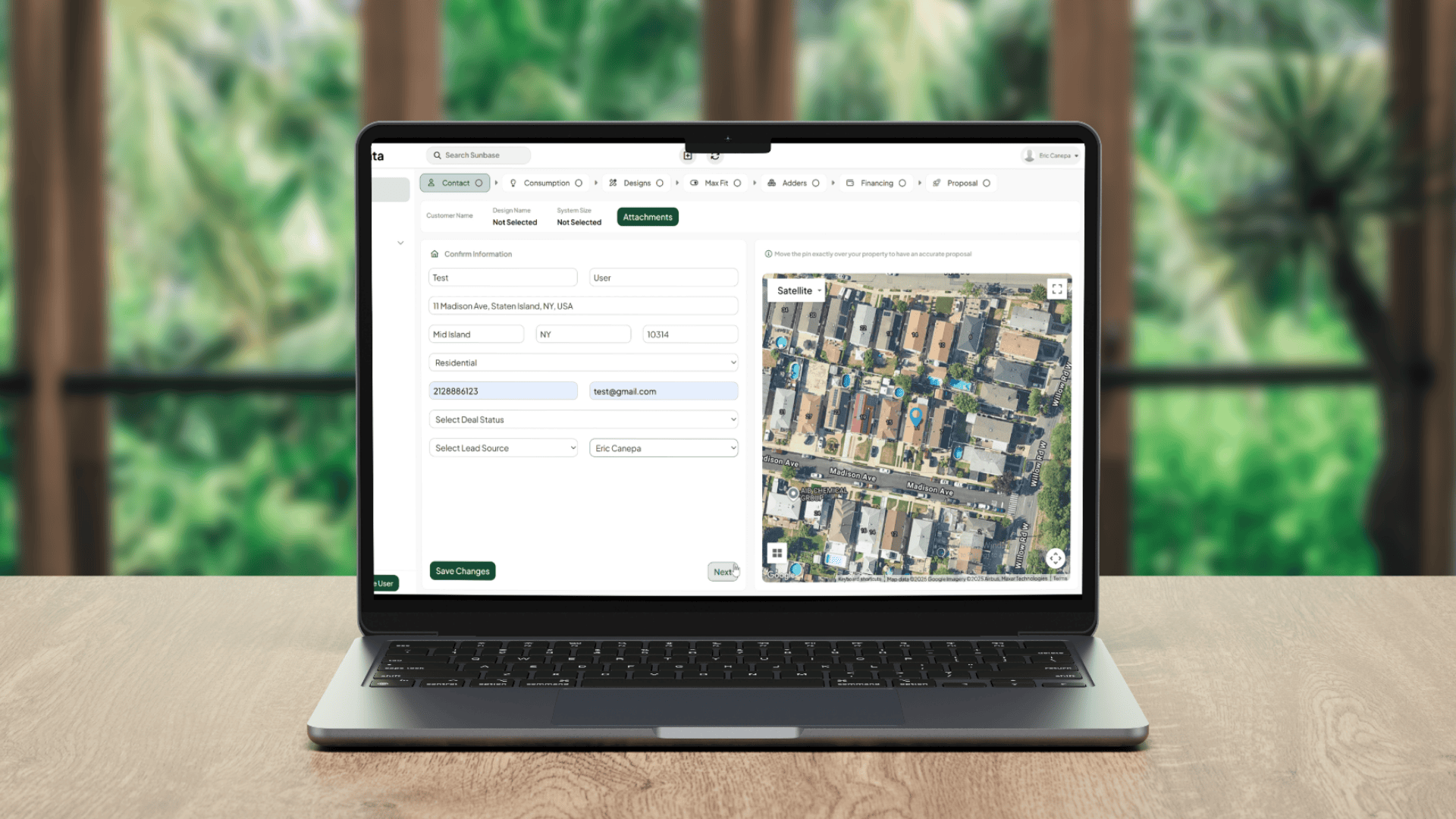May 31, 2023
As the business world becomes increasingly competitive, generating quality leads is a crucial aspect of B2B success. However, finding effective strategies for lead generation can be challenging. In this article, we'll explore some of the proven lead-generation tactics B2B companies can use to generate leads and drive sales.
From leveraging social media and email marketing to creating valuable content and nurturing leads, these tactics can help businesses connect with potential customers and build long-term relationships. By implementing these strategies, you can increase your chances of success in the B2B marketplace and grow your business.
What is B2B Lead Generation?
B2B lead generation is the process of identifying and attracting potential customers for a business-to-business (B2B) company. In other words, it's the process of finding and nurturing potential clients who are interested in your company's products or services. The goal of B2B lead generation is to build a pipeline of qualified prospects who are more likely to become paying customers in the future. This is accomplished by using a variety of tactics and strategies, such as email marketing, social media outreach, content marketing, and more.
Effective B2B lead generation requires a deep understanding of your target audience and their needs, as well as the ability to create compelling messages and offers that resonate with them. By successfully generating leads, B2B companies can increase their chances of making sales, growing their customer base, and ultimately achieving their business goals.
Understanding the Importance of Lead Generation in B2B Marketing
In the cutthroat world of B2B marketing, understanding the importance of lead generation is crucial to staying ahead of the game. Simply put, lead generation is the process of identifying and nurturing potential customers for your business, with the goal of ultimately converting them into paying customers.
But why is lead generation so critical in the B2B space? For starters, B2B sales cycles tend to be much longer and more complex than those in B2C markets. This means that businesses need to build relationships and establish trust with prospects over time, often through multiple touchpoints and interactions.
Furthermore, B2B buyers are typically looking for more than just a product or service - they're looking for a partner who can help them solve a problem or achieve a goal. Effective lead generation allows you to demonstrate your expertise, build credibility, and position your business as the go-to solution for your target audience's needs.
Ultimately, the success of any B2B marketing strategy hinges on the ability to generate high-quality leads that are a good fit for your business. By understanding the importance of lead generation and implementing effective tactics, you can stay top-of-mind with potential customers, build lasting relationships, and ultimately drive revenue for your business.
Top B2B Lead Generation Strategies
Generating high-quality leads is a top priority for B2B companies looking to grow their customer base and increase revenue. To help you achieve success in your lead generation efforts, here are the top B2B lead generation strategies:
Content Marketing:
Content marketing remains a powerful strategy for attracting and engaging B2B prospects. Creating valuable, informative, and relevant content such as blog posts, whitepapers, e-books, and webinars can position your business as a trusted industry resource. By consistently delivering high-quality content, you can capture the attention of your target audience and nurture them through the buyer's journey.
Search Engine Optimization (SEO):
Optimizing your website for search engines is crucial to ensure that your business is visible to potential customers. By conducting keyword research, optimizing on-page elements, and building quality backlinks, you can improve your website's organic search rankings and drive more targeted traffic. Appearing in relevant search results increases the chances of attracting qualified leads actively searching for solutions you offer.
Social Media Marketing:
Social media platforms provide an excellent opportunity to reach and engage with your target audience. By creating a strong presence on platforms such as LinkedIn, Twitter, and Facebook, you can share valuable content, engage in industry discussions, and build relationships with prospects. Social media also allows for targeted advertising, enabling you to reach specific demographics and expand your reach.
Email Marketing:
Email marketing continues to be an effective strategy for nurturing leads and driving conversions. By building an opt-in email list and sending targeted, personalized emails, you can deliver valuable content, promote your products or services, and stay top-of-mind with your prospects. Automated email workflows and drip campaigns can be used to nurture leads at different stages of the buyer's journey.
Webinars and Events:
Hosting webinars and participating in industry events provide opportunities to showcase your expertise, connect with potential customers, and generate leads. By offering valuable insights and actionable advice through webinars, you can attract a highly engaged audience and collect contact information from attendees. Similarly, participating in trade shows and conferences allows you to network with prospects and establish valuable connections.
Account-Based Marketing (ABM):
Account-Based Marketing is a highly targeted approach that focuses on specific accounts rather than targeting a broader audience. By identifying key accounts that align with your ideal customer profile, you can tailor your marketing efforts to address their specific needs and pain points. ABM involves personalized outreach, customized content, and close collaboration between marketing and sales teams.
Referral Programs:
Encouraging satisfied customers and partners to refer your business can be a highly effective lead-generation strategy. Implementing a referral program that rewards individuals or businesses for referring qualified leads can motivate your network to promote your offerings. Referral programs can include incentives such as discounts, exclusive access, or monetary rewards.
Web Optimization and Conversion Rate Optimization (CRO):
Optimizing your website and landing pages is essential for maximizing lead generation. By ensuring your website is user-friendly, mobile-responsive, and visually appealing, you can create a positive browsing experience for visitors. Conversion rates optimization techniques, such as A/B testing, call-to-action optimization, and form optimization, help improve your website's ability to convert visitors into leads.
Web Chat and Live Support:
Integrating web chat functionality on your website enables real-time engagement with potential leads. Offering instant support and assistance can help address any concerns or questions prospects may have, improving their experience and increasing the likelihood of conversion. Implementing chatbots or live chat services allows businesses to capture leads, gather contact information, and provide personalized recommendations, enhancing the overall lead-generation process.
Refining Lead Nurturing Strategies:
Lead generation efforts go hand in hand with lead nurturing strategies. Once leads are captured, it's crucial to have a well-defined plan to nurture and convert them into customers. Personalized and automated lead nurturing campaigns can be designed to deliver targeted content, offer product demos, provide case studies, or address specific pain points throughout the buyer's journey. Consistently engaging with leads and providing relevant information helps build trust and credibility, and increases conversion rates.
To refine your lead nurturing strategy, make sure you have the power of lead management software in your business. You can automate 99% of your lead nurturing strategies with the help of lead management software.
Leveraging Digital Channels for Effective B2B Lead Generation
In today's digital age, leveraging the right digital channels can be a game-changer for lead generation in the business-to-business (B2B) space. Companies can use various digital channels and tactics to reach their target audience more effectively and generate high-quality leads.
One of the most effective digital channels for B2B lead generation is social media. LinkedIn, in particular, is a powerful platform for companies to build their brand, connect with potential customers, and drive traffic to their websites. By regularly sharing valuable content, engaging with followers, and participating in industry discussions, companies can establish themselves as thought leaders and attract potential customers.
Another important digital channel for B2B lead generation is email marketing. By creating targeted email campaigns with personalized messaging, companies can nurture leads and move them further down the sales funnel. Email marketing allows businesses to stay top-of-mind with potential customers and provide them with relevant content and offers that are tailored to their needs.
In addition to social media and email marketing, companies can also leverage other digital channels such as search engine optimization (SEO), pay-per-click (PPC) advertising, and content marketing. By using a combination of these tactics, companies can create a comprehensive digital strategy that drives traffic, generates leads, and ultimately lead to sales.
Overall, leveraging digital channels is a crucial aspect of lead generation in the B2B space in today's digital age. By using the right channels and tactics, companies can connect with potential customers more effectively and increase their chances of success in the competitive B2B marketplace.
Key Metrics to Measure the Success of Your B2B Lead Generation Efforts
Measuring the success of your B2B lead generation efforts is crucial to ensure that your marketing strategies are effective and achieve the desired results. By tracking key metrics, you can identify what's working well and what needs improvement, allowing you to optimize your efforts and generate more high-quality leads.
Conversion Rate:
Conversion rate is an important metric that calculates the percentage of website visitors who take a desired action, such as filling out a contact form or requesting a demo. A high conversion rate implies that your website is efficiently persuading users to perform the intended action. To improve your conversion rate, you can focus on optimizing your landing pages, improving your call-to-action messaging, and streamlining the lead capture process.
Cost Per Lead:
Calculating the cost per lead allows you to measure the amount of money you spend on marketing to generate a single lead. This metric helps you identify which marketing channels and tactics are the most cost-effective. By tracking the cost per lead, you can allocate your marketing budget more efficiently and invest in strategies that yield a higher ROI. For instance, you may find that certain digital advertising campaigns have a higher cost per lead compared to content marketing efforts, prompting you to reallocate your budget accordingly.
Lead Quality:
Measuring lead quality is essential for evaluating the effectiveness of your lead generation efforts. This metric takes into account factors such as the level of engagement of your leads, their fit with your target audience, and their likelihood to convert into a customer. By assessing lead quality, you can focus your efforts on generating more high-quality leads that are more likely to convert. This may involve refining your lead qualification criteria, nurturing leads through targeted content, and aligning your marketing and sales teams to ensure seamless lead handoff.
Customer Acquisition Cost:
Customer acquisition cost (CAC) measures the cost of acquiring a new customer, including the marketing and sales costs associated with closing a deal. Tracking CAC helps you identify areas where you can reduce costs and improve efficiency in your lead generation and sales processes. By analyzing CAC, you can evaluate the effectiveness of your marketing campaigns, sales strategies, and customer retention efforts. Lowering your CAC can involve tactics such as optimizing your sales funnel, improving lead nurturing techniques, and leveraging customer referrals.
Return on Investment (ROI):
ROI is a critical metric that measures the return on your marketing investment. It compares the revenue generated from your marketing efforts to the cost of those efforts. By calculating ROI, you can determine which marketing channels and tactics are generating the highest return and adjust your strategies accordingly. For example, if you find that your email marketing campaigns have a high ROI compared to social media advertising, you can allocate more resources to email marketing to maximize your returns.
Overcoming Common Challenges in B2B Lead Generation and Conversion
Generating high-quality leads and converting them into customers is a top priority for B2B companies. However, the B2B lead generation and conversion process is often complex and challenging, with many potential roadblocks along the way. Here are some common challenges that B2B companies face when it comes to lead generation and conversion, along with strategies for overcoming them:
Lack of Alignment Between Sales and Marketing:
A common challenge in B2B lead generation is the lack of alignment between sales and marketing teams. To overcome this challenge, it's important to establish clear communication channels between sales and marketing teams and ensure that they share common goals and objectives.
Difficulty in Generating Quality Leads:
Generating high-quality leads is a common challenge in B2B lead generation. To overcome this challenge, companies need to focus on creating targeted content that resonates with their target audience and provides value. They should also leverage a variety of channels, including social media, email marketing, and content marketing, to reach potential customers where they are.
Lack of Personalization:
Personalization is crucial in B2B lead generation, as it helps build trust and credibility with potential customers. To overcome this challenge, companies should focus on collecting data on their leads and using it to personalize their marketing messages and communications.
Long Sales Cycles:
B2B sales cycles can be long and complex, which can make it challenging to convert leads into customers. To overcome this challenge, companies should focus on building strong relationships with their leads and providing them with relevant information and support throughout the sales process.
Difficulty in Measuring ROI:
Measuring the return on investment (ROI) of B2B lead generation and conversion efforts can be challenging. To overcome this challenge, companies should establish clear goals and metrics for their campaigns, track and analyze data regularly, and adjust their strategies as needed.
B2B Lead Nurturing: Best Practices for Building Stronger Relationships
In B2B marketing, lead nurturing is the process of building and maintaining relationships with potential customers who are not yet ready to make a purchase. By nurturing leads over time, B2B companies can establish trust, credibility, and a strong relationship with their prospects, ultimately leading to more conversions and sales. Here are some best practices for B2B lead nurturing:
Create targeted content:
When it comes to lead nurturing, content is king. By developing targeted content that speaks directly to the needs and pain points of your target audience, you can establish your company as a valuable resource. Offer informative blog posts, whitepapers, case studies, and webinars that address specific challenges your potential customers face.
For example, if you're a software company targeting small businesses, you might create content that discusses how your software can streamline operations, increase productivity, and save costs.
Use marketing automation:
Marketing automation tools are invaluable for streamlining and scaling your lead nurturing efforts. Implement lead scoring to identify the level of engagement and readiness of your leads. This allows you to prioritize your efforts and focus on leads that are most likely to convert.
Additionally, set up triggered email campaigns that deliver personalized content based on a lead's actions or stage in the buying process. Social media nurturing is another aspect of marketing automation, enabling you to schedule and share relevant content on platforms where your target audience is active.
Segment your audience:
Segmentation is essential for effective lead nurturing. By dividing your leads into specific groups based on demographics, interests, and behaviors, you can create tailored content and communications that resonate with each segment.
For instance, if you offer a product or service that caters to different industries, you can segment your leads accordingly and deliver content that addresses the unique challenges faced by each industry.
Engage on social media:
Social media platforms provide a great opportunity to engage with your leads and build relationships. Share informative and relevant content, participate in industry discussions, and respond to comments and inquiries promptly.
Establishing a strong social media presence allows you to interact with your leads directly, address their concerns, and position your company as a thought leader in your industry.
Provide personalized follow-up:
After the initial contact, it's crucial to follow up with your leads in a personalized manner. Instead of sending generic messages, tailor your communications based on the specific needs and interests of each lead.
Refer back to their previous interactions or actions to demonstrate that you value their engagement. Personalized follow-up can include sending targeted content, addressing specific pain points they mentioned, and offering customized solutions or demos.
Measure and optimize:
Continuous measurement and optimization are key to successful lead nurturing. Keep a close eye on key metrics such as open rates, click-through rates, and conversion rates. Analyze the data to identify trends, patterns, and areas for improvement.
For example, if certain emails have low open rates, you can experiment with different subject lines or content formats to increase engagement. Regularly testing and optimizing your lead nurturing campaigns ensures that you stay responsive to your audience's preferences and behaviors.
Future of B2B Lead Generation: Emerging Trends & Technologies
As B2B businesses continue to grow, the importance of lead generation cannot be overstated. In recent years, new technologies and emerging trends have made significant changes to the B2B lead generation landscape. Here are some of the emerging trends and technologies that are shaping the future of B2B lead generation:
Artificial Intelligence (AI):
AI is revolutionizing B2B lead generation by enabling businesses to leverage advanced algorithms and data analysis to identify and target the most promising leads. Machine learning algorithms can analyze vast amounts of customer data, including browsing behavior, engagement patterns, and purchase history, to predict which prospects are most likely to convert.
This allows B2B businesses to allocate their resources more efficiently, focusing on leads with higher conversion potential and delivering personalized experiences that resonate with their needs.
Predictive Analytics:
Predictive analytics takes data analysis to the next level by using historical data and statistical modeling to forecast future outcomes. By leveraging predictive analytics, businesses can identify patterns, trends, and correlations within their customer data to predict which prospects are more likely to convert.
This insight enables B2B marketers to develop targeted marketing campaigns that are tailored to the specific needs and preferences of these prospects. By leveraging data-driven insights, businesses can improve the efficiency and effectiveness of their lead-generation efforts.
Account-Based Marketing (ABM):
Account-Based Marketing is gaining popularity in the B2B space due to its effectiveness in targeting high-value accounts and delivering personalized experiences. With ABM, businesses identify specific accounts that align with their ideal customer profile and create customized marketing campaigns for each account.
This approach allows for more focused messaging, personalized content, and tailored interactions throughout the buyer's journey. By treating individual accounts as a market of one, B2B companies can forge stronger relationships, increase engagement, and drive higher conversion rates.
Chatbots:
Chatbots are AI-powered tools that provide real-time interaction and support to website visitors and prospects. They can assist with inquiries, provide product information, and guide potential customers through the buying process. Chatbots offer immediate responses and personalized recommendations based on the prospect's needs and preferences.
These automated conversational agents are available 24/7, ensuring that prospects receive timely assistance and information, thereby improving customer experience and increasing the chances of conversion.
Personalization:
Personalization has become a critical aspect of successful B2B lead generation. Today's customers expect tailored experiences that cater to their specific needs and preferences. By leveraging customer data, businesses can deliver personalized marketing messages, content, and recommendations at every touchpoint of the buyer's journey.
Personalization encompasses various elements, including dynamic website content, personalized emails, targeted advertising, and customized product/service recommendations. By providing relevant and customized experiences, businesses can build stronger relationships with prospects, increase engagement, and improve the chances of conversion.
Tools and Resources for Streamlining Your B2B Lead Generation Process
B2B lead generation can be a time-consuming process, but there are tools and resources available that can help streamline the process and make it more efficient. Here are some of the top tools and resources for streamlining your B2B lead generation process:
CRM software:
Customer Relationship Management (CRM) software can help you manage your leads and track their progress through the sales pipeline. You can use CRM software to capture lead information, track communication history, and set reminders for follow-up tasks.
Email marketing tools:
Email marketing tools can help you create and send targeted emails to your leads. You can use email marketing tools to segment your leads based on their interests and behaviors and send them personalized messages that are more likely to convert.
Lead generation software:
Lead generation software can help you find new leads and prospects by searching databases and social media platforms. Some lead generation software can even provide contact information and other valuable data about potential leads.
Social media management tools:
Social media is an important part of B2B lead generation, but managing multiple social media accounts can be time-consuming. Social media management tools can help you schedule posts, monitor engagement, and track your social media performance.
Web analytics tools:
Web analytics tools can help you track the performance of your website and landing pages. You can use web analytics to track visitor behavior, identify areas for improvement, and optimize your website for lead generation.
Conclusion
In conclusion, implementing effective lead generation tactics and strategies is essential for generating more leads and building a solid lead generation strategy in the B2B space. To ensure that your lead generation efforts are successful, it's crucial to have a sales team that is aligned with your business goals and objectives. By focusing on sales-qualified leads and incorporating feedback from your sales team, you can optimize your lead-generation campaigns and increase your chances of converting leads into customers.
By implementing comprehensive lead generation strategies that include best practices, emerging trends, and the right tools and resources, businesses can generate more qualified leads and grow their business more effectively.
About Sunbase
Sunbase helps solar companies succeed through a suite of Solar CRM tools like Solar Lead Management Software, Solar Proposal Software, etc.! To book your free demo or an appointment, contact us here.
One Platform. Zero Chaos. Run Your Entire Business in One Place.
Sunbase replaces your CRM, proposals, scheduling, job tracking, and reporting tools — all inside one clean, connected platform.
About Sunbase
The All-In-One Platform to Run Your Entire Business
Sunbase helps you organize operations, streamline daily workflows, and manage everything - from first customer contact to final project deliver- in one connected system.
Our Mission
- Organize your business.
- Optimize your workflow.
- Automate what slows you down.
Why Businesses Choose Sunbase
One Connected Workflow
Replace scattered tools and manual processes with a single platform that brings together your team, tasks, customers, jobs, and performance data.
🌎 Global Presence
Serving the United States, Canada, India, LATAM, Australia, and 10+ international markets.
👥 11,000+ Users
Trusted by contractors, installers, project managers, sales teams, and field technicians.
🏗️ Built for All Sizes
From small contracting teams to fast-growing enterprises, Sunbase adapts to your workflow.
Useful Links For You
Stop Managing Your Business Manually. Automate It.
Sunbase automates workflows, reduces mistakes, and helps your team get more done - without hiring extra staff or juggling multiple tools.











